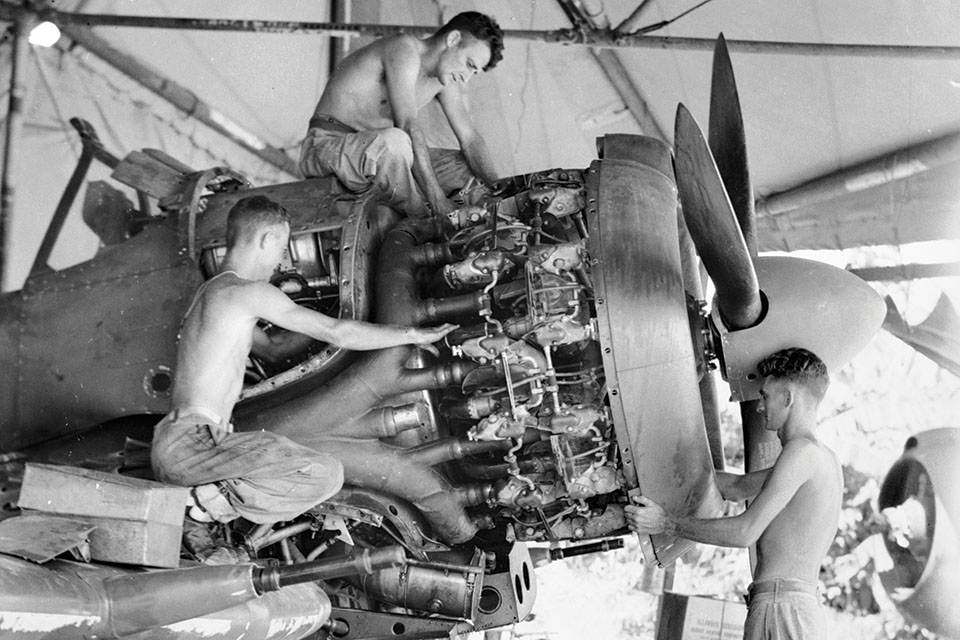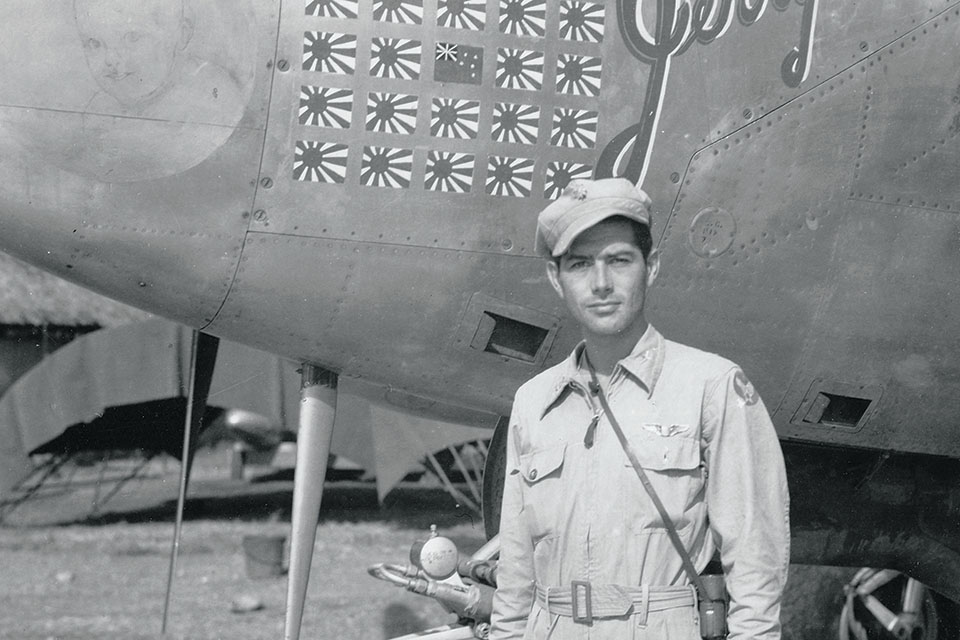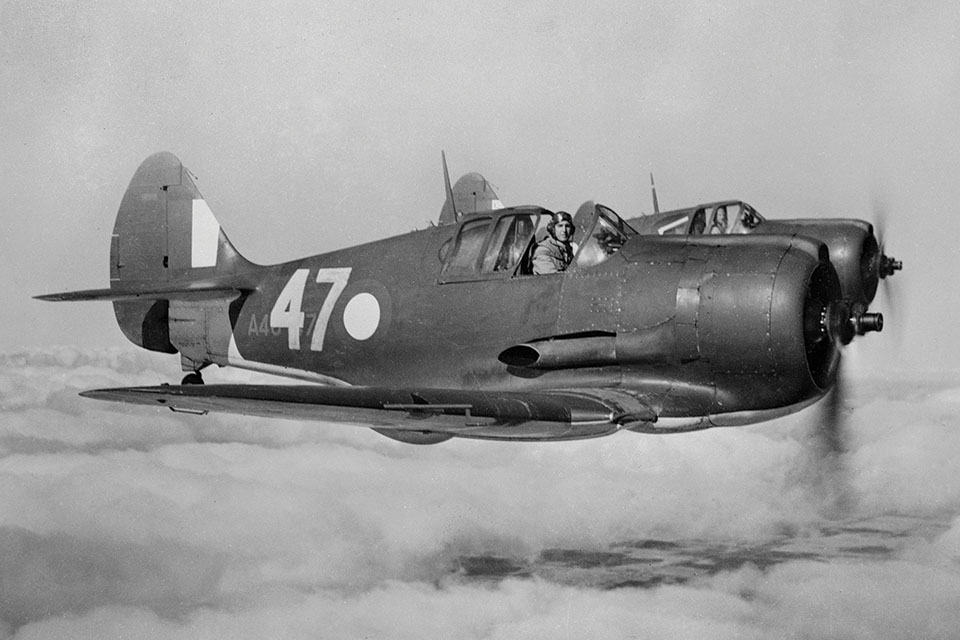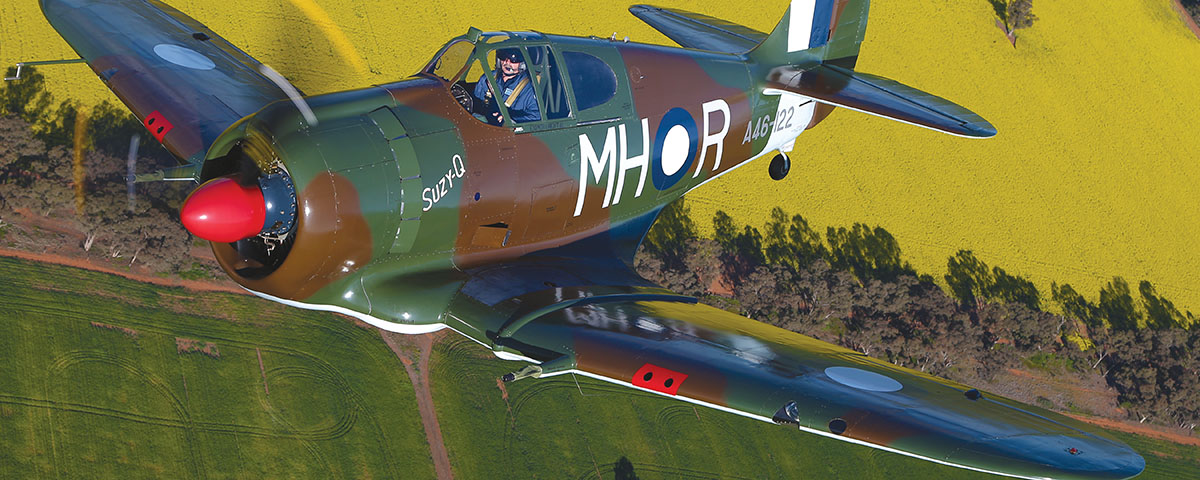Designed by an Austrian around an American engine, the Commonwealth Boomerang was the first frontline combat aircraft built in Australia.
Barely two months after Pearl Harbor, Japanese bombers attacked Darwin, Australia’s Northern Territory capital, in the first of 97 raids.
With fears of a Japanese invasion growing, the island nation urgently needed fighter aircraft, but the Royal Australian Air Force fleet was small and largely obsolete. The RAF’s needs had preempted the supply of new airplanes and spares from Britain, and as the United States geared up for war, Australia could no longer be certain of promised aircraft from that ally either.
Australia had never before produced a frontline combat aircraft. The new plane had to use whatever components were already on hand: engines from a torpedo bomber, structural elements from a trainer. It was designed by Friedrich David, who was officially an enemy alien. Born with few advantages but succeeding through dogged persistence, the Commonwealth Aircraft Company CA-12 through CA-19 Boomerangs were true “Aussie battlers.”
An Austrian Jew, Fred David had been sent to Japan by Ernst Heinkel to save him from Nazi persecution. There he helped develop the Mitsubishi A5M “Claude” fighter and Aichi D3A “Val” dive bomber before the Kempeitai secret police began to show an unwelcome interest in him. Fleeing to Australia just as war broke out, David was interned as an enemy alien until CAC’s general manager, Wing Cmdr. Lawrence Wackett, arranged for his release and appointed him chief engineer. Even so, David had to report to the police every two weeks.
Australia was producing two military aircraft at the time: the obsolescent Bristol Beaufort torpedo bomber and the CAC Wirraway (Aboriginal for “challenge”), a trainer and general-purpose aircraft developed from the North American NA-16—known as the Harvard I to Commonwealth forces. David designed the Boomerang around the Beaufort’s 1,200-hp Twin Wasp engine, reusing the jigs used to build the Wirraway’s wing, center section, landing gear and tail assembly.

Armament was another challenge. British and Commonwealth aircraft in the Pacific still relied on .303-inch machine guns, but experience had shown that heavier guns were needed to deal with the new enemy fighters. The only aircraft cannon in the country was a 20mm British Hispano-Suiza brought back from the Middle East. The designers decided to reverse-engineer that gun and set up a manufacturing operation from scratch. Armed with two 20mm cannons and four .303-inch machine guns, the Boomerang packed a punch that was slightly superior to the Mitsubishi A6M2 Zeros’ at the time.
Initial tests brought good news and bad. The Boomerang’s agility and high rate of climb meant it could hold its own in mock dogfights against a Bell P-39 Airacobra and a Curtiss Kittyhawk (the RAF name for the P-40D and later variants), but its comparatively underpowered engine was a concern, especially above 15,000 feet.
The RAAF ordered 105 CA-12 Boomerangs in February 1942, the same month as the initial raid on Darwin, receiving the first aircraft just five months later. An order for 145 more led to the CA-13, CA-14 and CA-19 versions, each with minor improvements. A single CA-14 was fitted with a General Electric supercharger to improve high-altitude performance, but it barely fit into the compact fuselage and its large intake resulted in buffeting problems. By this time, though, the Boomerang was being replaced by faster Supermarine Spitfire Mk. Vcs (the first 70 of which reached Australia in January 1943) and P-40D Kittyhawks from Britain and the U.S.
The first Boomerang squadron, No. 84, was based at Horn Island, in the Torres Strait between Australia and New Guinea. Early in 1943, a Japanese invasion of Australia was still considered possible, and the Allied base at Merauke, in southern New Guinea, had been attacked several times from both land and air. On May 16, Flying Officer Robert W. Johnstone and Sergeant M.F.J. Stammer intercepted three Mitsubishi G4M1 “Betty” bombers, which escaped into the clouds after a brief exchange of fire. The rest of the summer passed uneventfully, and the squadron was reequipped with Kittyhawks that October.
Based in Western Australia, No. 85 Squadron protected the U.S. Navy submarine base at Exmouth Gulf. On the night of May 20, 1943, two of the squadron’s Boomerangs intercepted a pair of Japanese Kawanishi H8K2s, but the big flying boats ditched their bombs and outran the fighters. The Boomerangs scrambled on two other occasions without making contact with the enemy. No. 85 began to receive the Spitfire Mark V in September 1944, and the squadron’s last Boomerangs were replaced on January 12, 1945.
The third RAAF Boomerang squadron, No. 83, flew patrols and convoy escort missions from the Northern Territory until mid-1944. Its Boomerangs never saw combat.
According to RAAF records, no Boomerang is credited with downing an enemy aircraft. Japanese army fighters shot down two Boomerangs over New Guinea, however, on September 6 and November 26, 1943.
After RAAF fighter squadrons reequipped with Spitfires and Kittyhawks, the Boomerang found its true calling as a close support and tactical reconnaissance aircraft with Nos. 4 and 5 squadrons in New Guinea, the Solomon Islands and Borneo. The fighter’s armament, ruggedness and agility suited it for this new role. Operating in pairs, one at treetop height and one flying top cover, Boomerangs dealt with enemy positions ahead of advancing Allied forces. In addition to employing their guns, they could carry bombs weighing up to 500 pounds on a central hardpoint, as well as 20-pound smoke bombs to mark targets.
When No. 4 Squadron’s Wirraways were supplemented by Boomerangs in May 1943, the unit had been in New Guinea for six months, supporting U.S. and Australian ground forces. U.S. Army Lt. Gen. Robert L. Eichelberger expressed great admiration for the squadron’s work. One Boomerang pilot (whose name has unfortunately been lost to history) took off at dusk to direct artillery fire against an enemy gun position by observing the gun’s answering flashes against the deepening gloom. When the gun was destroyed, he made a risky landing at his tiny jungle airstrip by the headlights of two jeeps.
One of No. 4 Squadron’s Boomerangs suffered a unique fate when it returned from a mission on November 12, 1943, and was shot down by a P-38 Lightning. Pilot Officer Robert M. Stewart managed to crash-land his burning “Boomer” near Salamaua, and the American P-38 pilot, 1st Lt. Gerald Johnson, apologized profusely, saying he mistook the Boomerang for a Ki-43 “Oscar.” Johnson later added an Australian flag to the 20 Japanese flags that would eventually decorate the nacelle of his Lightning.

No. 5 Squadron also received Boomerangs in 1943, and was sent to Bougainville as part of No. 84 (Army Co-operation) Wing. On April 16, 1945, when two Australian brigades were held up by a Japanese force blocking a vital road, No. 5’s Boomerangs placed smoke bombs just 25 yards apart and 300 yards from the Australian front line, enabling Royal New Zealand Air Force F4U Corsairs to clear the way, with no Australian casualties. Group Captain G.N. Roberts, who commanded the New Zealand Air Task Force, said, “The excellent pinpointing by the Boomerangs has made the job a great deal easier and much more effective.”
One other RAAF unit equipped with Boomerangs, No. 8 Communication Unit, operated around New Guinea from late 1943, assisting with air-sea rescue operations. Boomerangs were also used for supply dropping and anti-malarial spraying, but it was their tree-skimming attacks on the enemy front lines that most endeared them to Allied ground forces slogging through the jungle. On more than one occasion the planes flew so low that they returned to base carrying leaves and small branches.
The job was not without its risks. Rugged as it was, the Boomerang was vulnerable to enemy groundfire as well as fighters. It was easy for an inexperienced pilot to groundloop the fighter, and an overzealous kick of a rudder pedal while taxiing could send it veering into the jungle. Because of their rarity, Boomerangs were regularly challenged by friendly ground and air forces.
Of the 250 Boomerangs built between 1942 and 1945, only a handful survive. The three said to be airworthy are all based in Australia: CA-13 A46-122 Suzy-Q at the Temora Aviation Museum in New South Wales; CA-19 A46-206 Milingimbi Ghost on static display at the Museum of Australian Army Flying at Oakey in Queensland; and A46-63, a restored CA-12 from 1943 with an added passenger seat. A46-30 is on static display at the RAAF Museum at Point Cook, near Melbourne. A CA-13 replica with many original parts, numbered A46-139 and painted in RAAF colors, flew for years in the U.S., but is now based in the Netherlands. The Warbirds Research Group’s online warbird registry lists eight other Boomerangs as surviving in partial condition and either in storage or under restoration.

Engine: CAC-built 1,200-hp Pratt & Whitney R-1830-S3C4-G Twin Wasp 14-cylinder radial engine driving three-bladed Hamilton 3T50 constant-speed propeller
Wingspan: 36 feet 3 inches
Weight: 5,373 lbs. (empty) 7,600 lbs. (max)
Max. speed: 305 mph at 15,500 feet
Climb: 2,940 feet per minute
Range: 930 miles (normal) 1,600 (with auxiliary tank)
Ceiling: 29,000 feet
Armament: Two 20mm cannons and four .303-inch Browning machine guns plus one 500-lb. bomb in place of auxiliary tank
An airline brat from the 1960s, Graeme Davis developed an early interest in aircraft of the interwar years and World War II. He discovered the CAC Boomerang thanks to the Airfix model kit. Suggested reading: The Commonwealth Boomerang, by Rene Francillon, and Commonwealth Boomerang Described, by Geoffrey Pentland.
Aussie Battler appeared in the September 2016 issue of Aviation History Magazine. Subscribe today!

